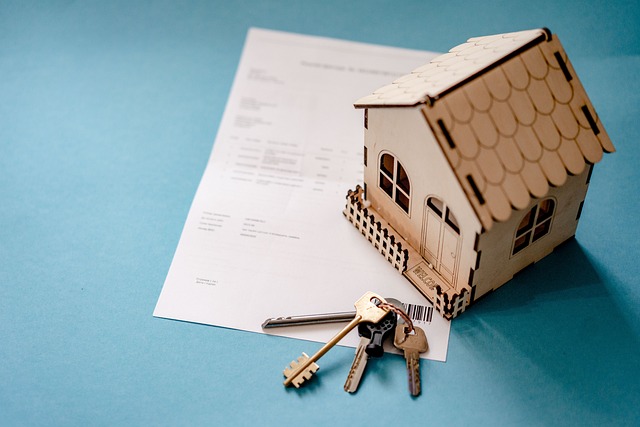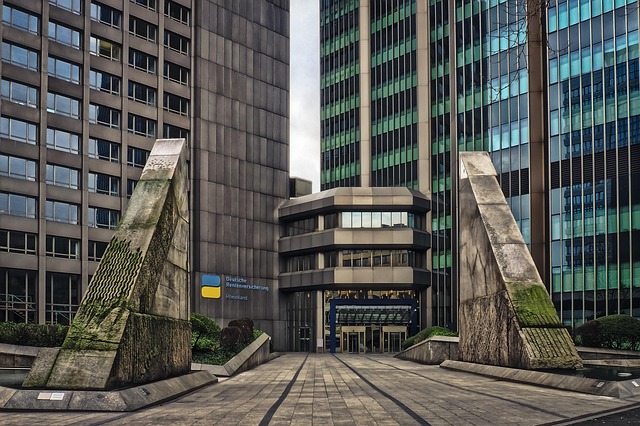Property and Casualty (P&C) insurance protects businesses from structural damage, contents loss, and liability claims. Commercial property covers buildings and fixtures, while casualty insures against liability for injuries or property damage. A tailored strategy involves risk assessment, policy customization, and careful review of exclusions. Prompt claim notification includes contacting insurers with details, and adjusting losses. Bundling policies and maintenance reduce costs while maximizing coverage, emphasizing proactive risk management.
In today’s unpredictable business landscape, safeguarding your commercial building through robust Property and Casualty (P&C) insurance is paramount. This comprehensive guide delves into the essentials of P&C insurance for commercial properties, exploring various coverage types, risk assessment methodologies, and tailored policy customization. We’ll dissect common exclusions and offer strategies to navigate claims efficiently. Additionally, we provide cost-effective risk management techniques, ensuring businesses are shielded against unforeseen events while optimizing financial resources.
Understanding Property and Casualty Insurance Basics

Property and Casualty (P&C) insurance is a crucial component of risk management for any business, especially those owning commercial buildings. This type of insurance provides financial protection against potential losses related to both the structure of the building and its contents. For businesses, understanding P&C insurance basics is essential as it covers various risks that can disrupt operations, cause damage, or lead to legal liabilities.
Commercial property insurance specifically caters to these needs by offering coverage for buildings, their fixtures, and inventory. It protects against perils like fire, vandalism, theft, extreme weather events, and more. Casualty insurance, on the other hand, focuses on liability protection, ensuring businesses are covered if someone is injured on their premises or if they’re found liable for property damage occurring to others. Together, these components ensure that businesses can continue operations with reduced financial strain in the event of unforeseen circumstances.
Types of Coverage for Commercial Buildings

Commercial buildings require a comprehensive insurance plan to safeguard against various risks. Property and casualty insurance for commercial buildings typically includes several key coverages designed to protect business assets and ensure continuity. First, property insurance protects the physical structure of the building from perils like fire, vandalism, theft, or natural disasters. This coverage can also extend to personal property within the premises, such as inventory, equipment, and fixtures.
Second, casualty insurance provides liability protection, covering legal costs and damages resulting from accidents on the insured property. This includes coverage for general liability, which shields against claims of bodily injury or property damage to customers or visitors, as well as professional liability, which protects against allegations of negligence in business operations or services provided. Together, these coverages form a robust foundation for businesses aiming to mitigate risks and secure their investments in commercial real estate.
Importance of Comprehensive Risk Assessment

A comprehensive risk assessment is an indispensable step in securing adequate property and casualty insurance for commercial buildings. It involves meticulously examining various aspects of a business’s operations, assets, and potential hazards to identify risks that could lead to financial losses. This process goes beyond simply evaluating physical structures; it encompasses all elements integral to the success and sustainability of a commercial venture.
By conducting a thorough risk assessment, insurance providers can tailor policies to specific needs, ensuring businesses are protected against a wide range of perils, from natural disasters like fires and floods to man-made incidents such as theft or vandalism. This proactive approach not only safeguards investments but also enables business owners to make informed decisions about their coverage, ultimately fostering peace of mind and resilience in the face of uncertainty.
Customizing Policies to Business Needs

Business owners know that every operation is unique, and their insurance coverage should reflect this. Customizing property and casualty insurance policies is a key advantage of full-service property insurance for businesses. This tailored approach ensures that each business’s specific needs are addressed. For instance, a retail store owner might require coverage for high-value inventory, while a manufacturer may need protection against potential product liability claims.
Full-service insurers offer the expertise to analyze these individual risks and craft policies that go beyond basic commercial building coverage. They can provide specialized solutions for businesses operating in various sectors, ensuring comprehensive protection. This customization is vital in mitigating potential losses and offering peace of mind, allowing business owners to focus on growth and success.
Common Exclusions and How to Mitigate Them

Many property and casualty insurance policies for commercial buildings have specific exclusions that business owners should be aware of. These exclusions are clauses that detail what isn’t covered under the policy, and understanding them is crucial in mitigating potential risks. Common exclusions include natural disasters like floods, earthquakes, and extreme weather events, which often require separate coverage through specialized policies. Another frequent exclusion is damage caused by war, terrorism, or civil unrest, necessitating tailored risk assessment and additional insurance measures for high-risk areas.
To mitigate these risks, business owners can take proactive steps. Investing in disaster preparedness plans and implementing safety features can reduce the impact of covered events. Upgrading buildings to meet modern construction standards and obtaining appropriate licenses can also enhance coverage eligibility. Additionally, reviewing policy language thoroughly and consulting with insurance experts ensures that any gaps are identified and addressed, providing comprehensive protection for commercial properties.
Claims Process: What Businesses Need to Know

When a business faces property damage or loss, understanding the claims process is crucial. The first step in any claim is to notify your insurance provider as soon as possible. This typically involves contacting your agent or directly reaching out to the insurer’s customer service team. It’s important to have all relevant details at hand, including the date and time of the incident, the location, and a preliminary assessment of the damage.
The property and casualty insurance for commercial buildings will then assign an adjuster to inspect the premises and assess the losses. This process may include taking photographs, conducting interviews with employees, and gathering documentation related to the claim. Once the adjuster completes their evaluation, they will provide a report outlining the scope of the loss. From there, the insurer will either approve or deny the claim based on policy terms and coverage limits. Effective communication throughout this stage is key to ensuring a smoother process and faster resolution.
Strategies for Cost-Effective Risk Management

Many businesses overlook the importance of comprehensive property insurance, often focusing solely on day-to-day operational costs. However, protecting your commercial building and assets is a strategic move for long-term risk management. Implementing cost-effective strategies can help minimise expenses while maximising coverage. One such approach is to bundle your Property and Casualty Insurance policies, which often offer discounts when insuring multiple aspects of your business under one roof. This includes insuring your physical structure, inventory, equipment, and liability against potential risks like fire, theft, or property damage.
Additionally, regular assessments and maintenance can significantly reduce insurance costs. Identifying and mitigating high-risk areas within your commercial building can prevent severe losses. For instance, upgrading electrical systems to meet modern safety standards not only reduces the chance of fires but also lowers insurance premiums. Staying proactive in risk management allows businesses to avoid costly claims and negotiate better rates with insurance providers.
